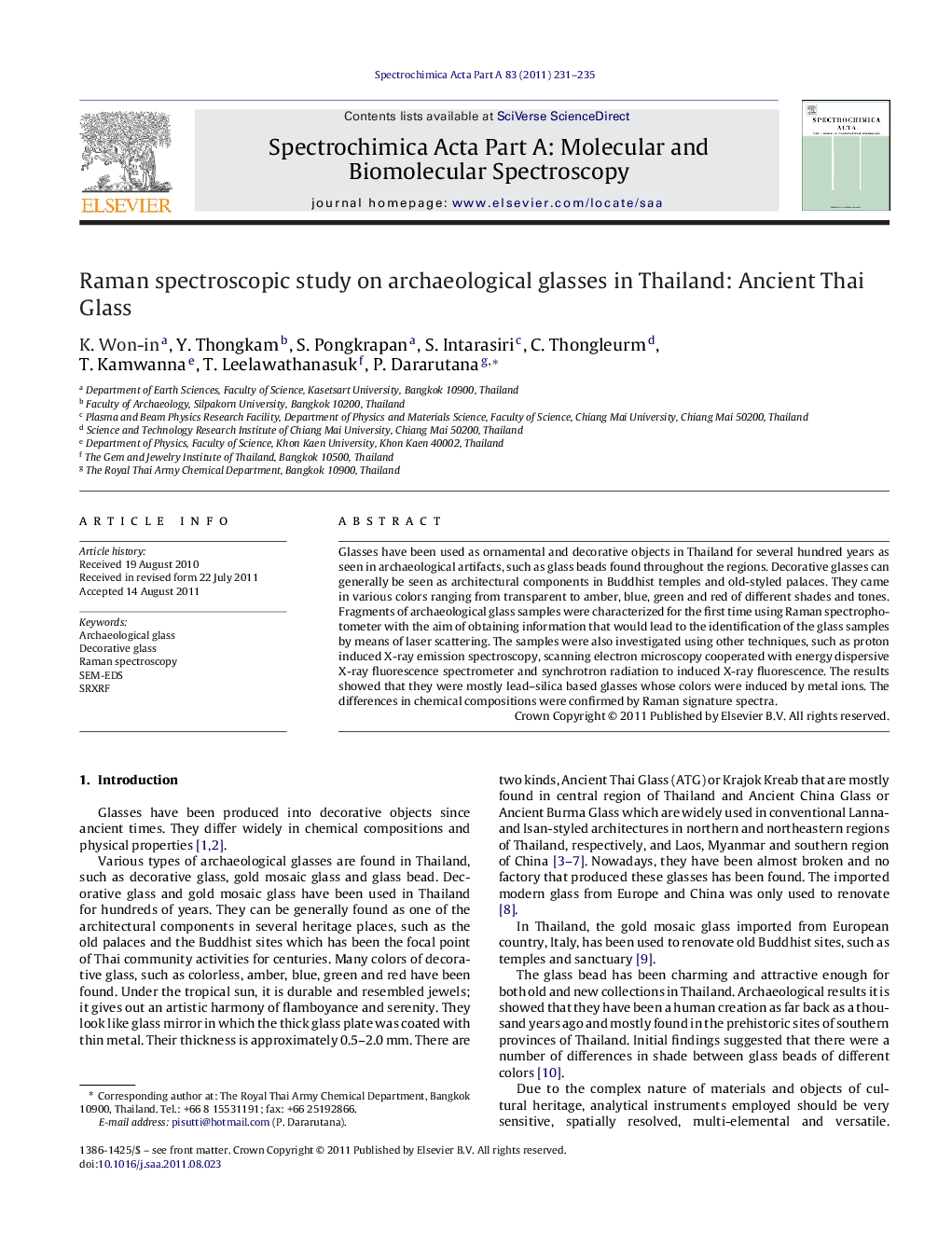| Article ID | Journal | Published Year | Pages | File Type |
|---|---|---|---|---|
| 1235173 | Spectrochimica Acta Part A: Molecular and Biomolecular Spectroscopy | 2011 | 5 Pages |
Glasses have been used as ornamental and decorative objects in Thailand for several hundred years as seen in archaeological artifacts, such as glass beads found throughout the regions. Decorative glasses can generally be seen as architectural components in Buddhist temples and old-styled palaces. They came in various colors ranging from transparent to amber, blue, green and red of different shades and tones. Fragments of archaeological glass samples were characterized for the first time using Raman spectrophotometer with the aim of obtaining information that would lead to the identification of the glass samples by means of laser scattering. The samples were also investigated using other techniques, such as proton induced X-ray emission spectroscopy, scanning electron microscopy cooperated with energy dispersive X-ray fluorescence spectrometer and synchrotron radiation to induced X-ray fluorescence. The results showed that they were mostly lead–silica based glasses whose colors were induced by metal ions. The differences in chemical compositions were confirmed by Raman signature spectra.
Graphical abstractFigure optionsDownload full-size imageDownload as PowerPoint slideHighlights► Ancient Thai Glass is one of the decorative glass which has been used for hundreds of years. ► The samples were mostly found to be lead–silica based glass with low magnesia and high potash. ► Various glass colorations were affected from metal ions doping. ► Glass production may be made in different factories and with raw materials. ► Raman spectra, SEM-EDS, PIXE and SRXRF were powerful tools for archaeological studies.
